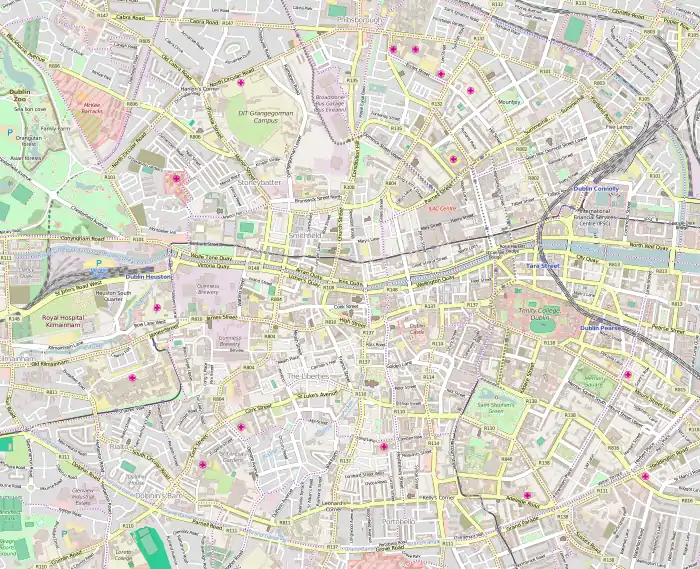Camden Street, Dublin
Camden Street (Irish: Sráid Port Caoimhin) is a street in Dublin 2. It links Ranelagh/Rathmines (Dublin 6) to the southern city centre of Dublin. It is divided into Camden Street Upper (southern end) and Camden Street Lower (northern end). The name is derived from Charles Pratt, 1st Earl Camden (1714–1794); an attempt to connect the name to Saint Kevin (Old Irish Cóemgen) is regarded as spurious.[1]
 Camden Court Hotel, on Camden Street Lower | |
 | |
| Native name | Sráid Port Caoimhin (Irish) |
|---|---|
| Namesake | Charles Pratt, 1st Earl Camden |
| Length | 450 m (1,480 ft) |
| Width | 17 metres (56 ft) |
| Location | Dublin, Ireland |
| Postal code | D02 |
| Coordinates | 53.333915°N 6.265208°W |
| north end | Cuffe Street |
| south end | Harrington Street, Harcourt Road, Richmond Street South |
| Construction | |
| Completion | 1778 |
| Other | |
| Known for | restaurants and nightclubs |
A prominent company located on Upper Camden St for over a century was Earley and Company (1861–1975). They were ecclesiastical furnishings and stained glass manufacturers and retailers. The firm was one of the largest and most prestigious ecclesiastical decorators both in Ireland and the U.K.[2][3]
There were two cinemas on the street: The Camden Cinema and the Theatre De Luxe. The Camden Cinema was located at 55 Upper Camden St., where the headquarters of Concern Worldwide is now located. It closed around 1912. The Theatre De Luxe was opened in 1912 by Maurice Elliman, a Jew who escaped the pogroms in Eastern Europe. The first building was designed by Frederick Hayes, MRIAI, and built by George Squire & Co. It was enlarged and rebuilt in 1920.[4] The exterior was remodelled in Art deco style in 1934. It closed in 1975.[5] The building is now a hotel (Hotel De Luxe) and a night-club.
References
- "Dublin's street names". February 14, 2013.
- "Earley and Company". National Irish Visual Arts Library. Archived from the original on April 15, 2013. Retrieved February 10, 2013.
- "Earley and Company". Mapping the Practice and Profession of Sculpture in Britain and Ireland 1851-1951. University of Glasgow. Retrieved February 10, 2013.
- Irish Times, 4 September 1920
- Ni Chonghaile, Mairéad (2001). Camden & Wexford St - A study of the past, A vision for the future. Dublin: Dublin Civic Trust. pp. 25–26.